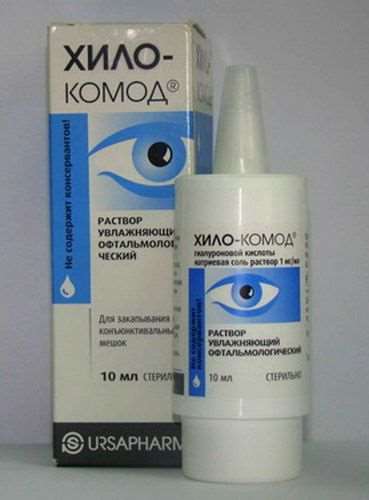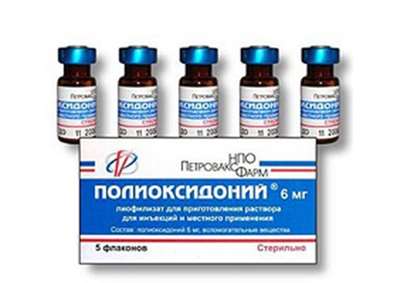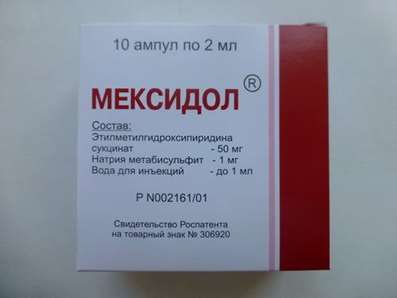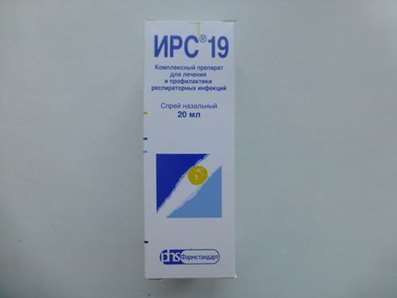Instruction for use: Stilamin
I want this, give me price
ATX Code H01CB01 Somatostatin
Active substance: Somatostatin
Pharmacological group
Hormones of the hypothalamus, pituitary gland, gonadotropins and their antagonists
Nosological classification (ICD-10)
E10 Insulin-dependent diabetes mellitus
Decompensation of carbohydrate metabolism, Diabetes mellitus, Diabetes insulin sugar, Diabetes mellitus type 1, Diabetic ketoacidosis, Insulin-dependent diabetes, Insulin-dependent diabetes mellitus, Coma hyperosmolar non-ketoacidotic, Labile form of diabetes mellitus, Violation of carbohydrate metabolism, Type 1 diabetes mellitus, Type I diabetes mellitus, Insulin-dependent diabetes mellitus, Type 1 diabetes mellitus
E87.2 Acidosis
Acidosis of the kidney, Acidotic shifts, Depletion of alkaline blood reserve, Decompensated acidosis, Acidosis in liver diseases, Respiratory acidosis, Ketoacidosis, Metabolic acidosis in acute intestinal infections, Alcoholic ketoacidosis, Metabolic acidosis, Hereditary renal acidosis, Renal acidosis, Renal tubular acidosis, Diabetic ketoacidosis, Diabetic acidosis, Renal tubular acidosis
I83 Varicose veins of lower extremities
Feeling of heaviness and fatigue in the lower limbs, Varicose veins of disseminated type, Varicose disease, Varicose disease of lower extremities, Varicose veins of the lower extremities, Varicose veins of the superficial veins, Varicose veins, Varicose veins diseases, Varicose Symptom Complex, Varicose Syndrome, Venous lameness, Venous varices, The disease of veins, Disease of the veins of the lower extremities, Prevaricosis syndrome, Pre-acute syndrome, Chronic varicose veins, Sclerotherapy of varicose veins
K25 Gastric ulcer
Helicobacter pylori, Pain syndrome in gastric ulcer, Pain syndrome in gastric ulcer and duodenal ulcer, Inflammation of the gastric mucosa, Inflammation of the gastrointestinal mucosa, Benign gastric ulcer, The disease of the stomach and duodenum, asotsiirovannoe with Helicobacter pylori, Aggravation gastroduodenita on the background of peptic ulcer, Exacerbation of peptic ulcer, The aggravation of gastric ulcer, The organic gastrointestinal disease, Peptic ulcer of the stomach and duodenum, Postoperative gastric ulcer, Recurrent ulcers, Symptomatic gastric ulcers, Chronic inflammatory disease of the upper gastrointestinal tract, associated with Helicobacter pylori, Helicobacter pylori eradication, Erosive and ulcerative lesions of the stomach, Erosive lesions of the stomach, The erosion of the gastric mucosa, Peptic ulcer disease, Stomach ulcer, Gastric lesion, Ulcerative lesions of the stomach, Symptomatic ulcers of the stomach and duodenum
K26 Duodenal Ulcer
Pain with duodenal ulcer, Pain syndrome in gastric ulcer and duodenal ulcer, The disease of the stomach and duodenum, asotsiirovannoe with Helicobacter pylori, Exacerbation of peptic ulcer, The worsening of duodenal ulcer, Peptic ulcer of the stomach and duodenum, Relapse of duodenal ulcers, Symptomatic ulcers of the stomach and duodenum, Helicobacter pylori eradication, Erosive and ulcerative lesions of the duodenum, Erosive-ulcerative lesions of duodenal ulcers associated with Helicobacter pylori, Erosive lesions of the duodenum, Duodenal ulcer, Ulcerative lesions of the duodenum]
K29 Gastritis and duodenitis
Aggravation gastroduodenita on the background of peptic ulcer, duodenitis
K92.2 Gastro-intestinal bleeding, unspecified
Gastric and intestinal bleeding, Acute bleeding from the upper gastrointestinal tract, gastrorrhagia, Gastrointestinal bleeding, Intraoperative abdominal bleeding, enterorrhagia, Bleeding in the upper digestive tract, Gastrointestinal bleeding, Bleeding from the upper gastrointestinal tract, Bleeding from the gastrointestinal tract, Intraoperative bleeding abdominal, Recurrent bleeding in the digestive tract, Diagnosis of bleeding from the small intestine, peptic ulcer bleeding, Mallory-Weiss syndrome, Recurrent bleeding from peptic ulcers, Bleeding stomach
T81.0 Bleeding and hematoma complicating the procedure, not elsewhere classified
Bleeding in the postoperative period, Bleeding during transfusion, Bleeding during operations on the brain, Bleeding during surgical interventions, Bleeding after colorectal interventions, Bleeding after prostatectomy, Bleeding during surgery and in the postoperative period, Bleeding due to surgery on the prostate and urinary tract
Z100 * CLASS XXII Surgical practice
Abdominal surgery, adenomectomy, Amputation, Coronary angioplasty, Angioplasty of the carotid arteries, Antiseptic skin treatment for wounds, Antiseptic Hand, Appendectomy, atherectomy, Balloon coronary angioplasty, Vaginal hysterectomy, The coronary bypass, Interventions in the vagina and cervix, Interventions on the bladder, Intervention in the mouth, Restoration and reconstructive surgery, Hand hygiene of medical personnel, Gynecologic surgery, Gynecological intervention, Gynecological surgery, Hypovolemic shock during operations, Disinfection of purulent wounds, Disinfection of wounds edges, Diagnostic intervention, Diagnostic procedures, Cervical Diathermocoagulation, Long-surgery, Replacing the fistula catheters, Infection in orthopedic surgery, Artificial heart valve, cystectomy, Short-term outpatient surgery, Short-term operation, Short surgical procedures, Krikotireotomiya, Blood loss during surgery, Bleeding during surgery and in the postoperative period, Kuldotsentez, laser photocoagulation, laser coagulation, retinal laser coagulation, Laparoscopy, Laparoscopy in Gynecology, CSF fistula, Small gynecological operations, Small surgical procedures, Mastectomy and subsequent plastic, mediastinotomy, Microsurgical operations on the ear, Mukogingivalnye operation, suturing, Minor surgery, neurosurgical operation, Immobilization of the eyeball in ophthalmic surgery, testectomy, pancreatectomy, Perikardektomiya, The period of rehabilitation after surgery, The period of, convalescence after surgery, Percutaneous transluminal coronary angioplasty, Pleural thoracentesis, Pneumonia postoperative and posttraumatic, Preparation for surgical procedures, Preparation for surgery, Preparation of the surgeon's hands before surgery, Preparation of the colon for surgical procedures, Postoperative aspiration pneumonia in neurosurgical and thoracic surgery, Postoperative nausea, Postoperative bleeding, postoperative granuloma, postoperative shock, The early postoperative period, myocardial revascularization, Radiectomy, gastric Resection, bowel resection, uterine Resection, liver Resection, enterectomy, Resection of part of the stomach, Reocclusion of the operated vessel, Bonding tissues during surgical procedures, Removal of sutures, Condition after eye surgery, Condition after surgery, Condition after surgery in the nasal cavity, Condition after gastrectomy, Status after resection of the small intestine, Condition after tonsillectomy, Condition after removal of the duodenum, Condition after phlebectomy, Vascular surgery, Splenectomy, Sterilization of surgical instruments, Sterilization of surgical instruments, sternotomy, Dental surgery, Dental intervention in periodontal tissues, strumectomy, Tonsillectomy, Thoracic surgery, total gastrectomy, Transdermal intravascular coronary angioplasty, Transurethral resection, Turbinektomiya, Removal of a tooth, cataract surgery, Removal of cysts, tonsillectomy, Removal of fibroids, Removing the mobile primary teeth, Removing polyps, Removing broken tooth, Removal of the uterus body, Removal of sutures, Urethrotomy, Fistula likvoroprovodyaschih ways, Frontoetmoidogaymorotomiya, Surgical infection, Surgical treatment of chronic limb ulcersm, Surgery, The surgery in the anal area, The surgery on the colon, Surgical practice, The surgical procedure, Surgical interventions, Surgery on the gastrointestinal tract, Surgical procedures on the urinary tract, Surgical procedures on the urinary system, Surgical intervention of the genitourinary system, Surgical procedures on the heart, Surgical manipulation, surgery, Surgery on the veins, Surgical intervention, Vascular surgery, Surgical treatment of thrombosis, cholecystectomy, Partial gastric resection, transabdominal hysterectomy, Percutaneous transluminal coronary angioplasty, Percutaneous transluminal angioplasty, Coronary artery bypass, tooth Extirpation, Extirpation of milk teeth, pulpectomy, pulsative cardiopulmonary bypass, tooth Extraction, teeth Extraction, cataract extraction, Electrocoagulation, endourological intervention, episiotomy, Etmoidotomiya, Complications after tooth extraction
Composition and form of release
1 ampoule with lyophilized powder for the preparation of the injectable solution contains somatostatin 250 or 3000 μg; Complete with a solvent in ampoules of 2 ml (0.9% sodium chloride solution for injection), in package 1 and 5 or 1 set, respectively.
Characteristic
Synthetic cyclic 14-amino acid peptide, in structure and action similar to natural somatostatin.
pharmachologic effect
The pharmacological action is somatostatin-like.
Reduces the secretion of gastrin, gastric juice, pepsin, reduces endocrine and exocrine secretion of the pancreas, suppresses the secretion of glucagon.
Pharmacodynamics
Prevents the release of growth hormone. Reduces the amount of blood flow in internal organs, without causing significant fluctuations in systemic blood pressure.
Indications
Expressed acute bleeding with peptic ulcer of the stomach or duodenum, from varicose-dilated esophagus veins, with erosive and hemorrhagic gastritis; Pancreatic fistula, bile and intestinal fistula (auxiliary treatment); Prevention of postoperative complications in surgical interventions on the pancreas; Diabetic ketoacidosis (ancillary treatment).
Contraindications
Hypersensitivity to somatostatin.
pregnancy and lactation
Contraindicated.
Side effects
Dizziness, hot flashes, nausea and vomiting (only at a medication injection rate of more than 50 μg / min).
Interaction
Increases the effect (sleep duration) of hexobarbital and pentetrazole - the simultaneous use of stilamin with these (or similar action) drugs is not recommended. Do not mix stilamin in one syringe (or in one infusion solution) with other medications.
Dosing and Administration
In / in (powder mixed with a solvent) slowly injected (3-5 min) 250 μg, then transferred to infusion at a rate of 250 μg / h (3000 μg mixed with a solvent, saline solution or 5% dextrose solution); With a break between two infusions for more than 3-5 minutes, intravenously injected intravenously with 250 μg. After stopping the bleeding (usually after 12-24 hours) infusion is continued for another 48-72 hours. With fistulas (pancreas, bile ducts, intestines), continuous drip infusion is performed until the fistula is closed (2-20 days). To prevent complications after surgical interventions on the pancreas, the infusion begins during the operation and continues for 2-5 days. With diabetic ketoacidosis, drip is administered - a rate of 100-500 μg / h (together with insulin).
Precautionary measures
At the beginning of treatment, temporary hypoglycemia may develop (blood glucose should be monitored every 3-4 hours). It is necessary to avoid repeated courses of treatment (sensitization is possible).
storage conditions
At a temperature not exceeding 25 ° C. The solution of the preparation in physiological solution remains stable for 72 hours (in the refrigerator).
Keep out of the reach of children.
Shelf life
2 years.
Do not use after the expiry date printed on the package.

 Cart
Cart





